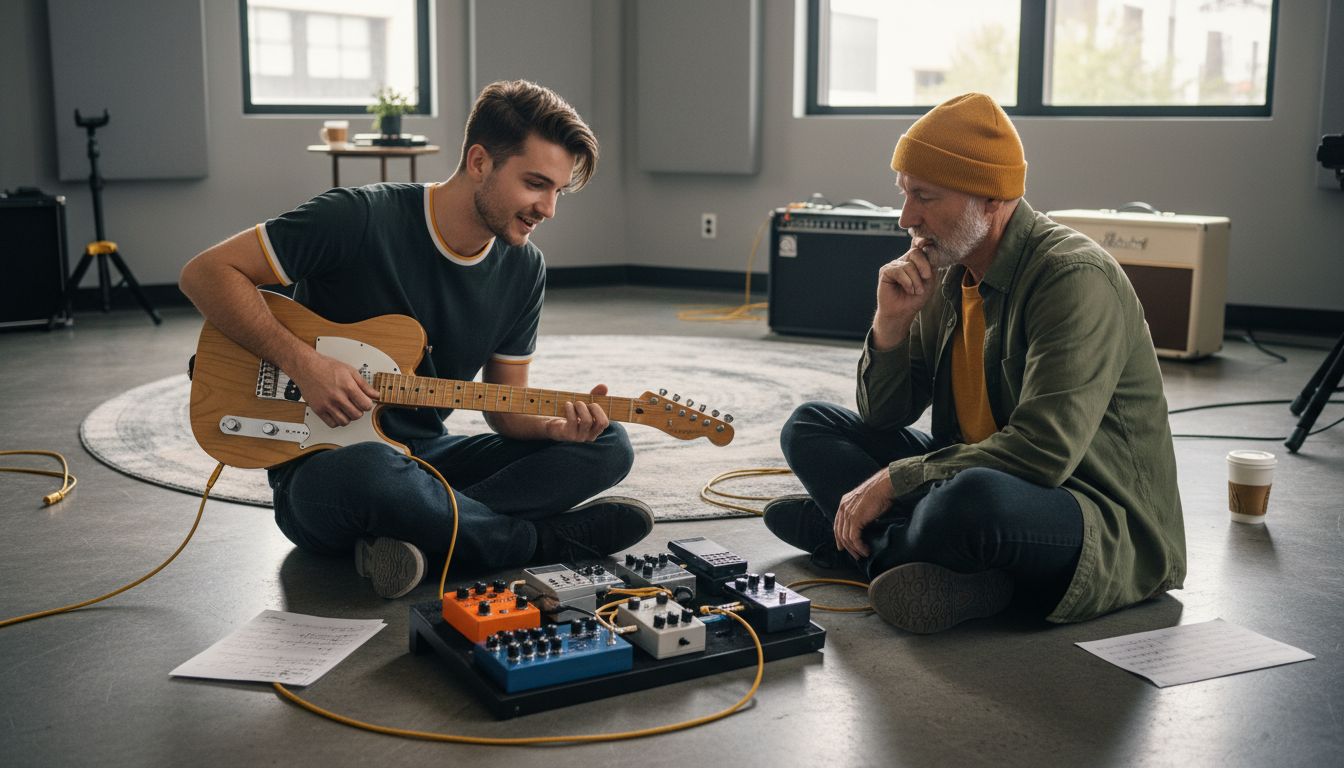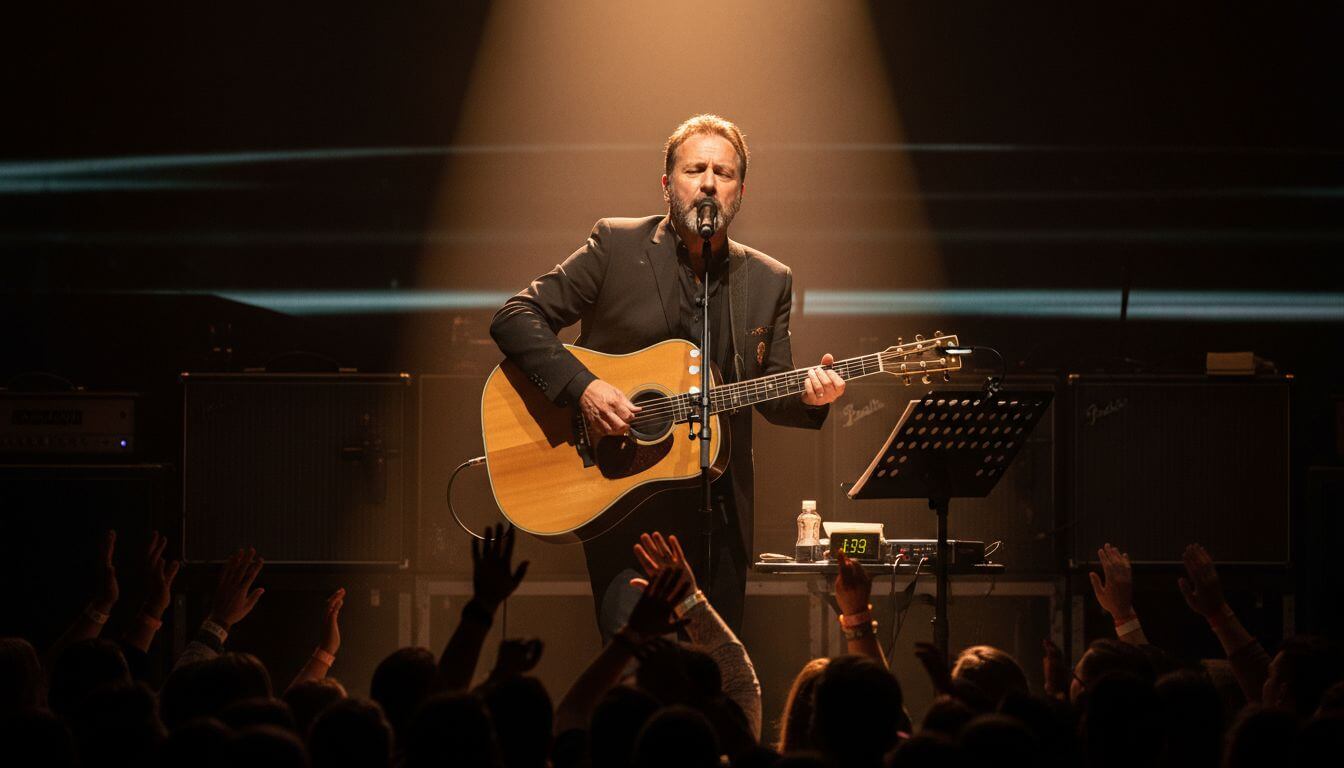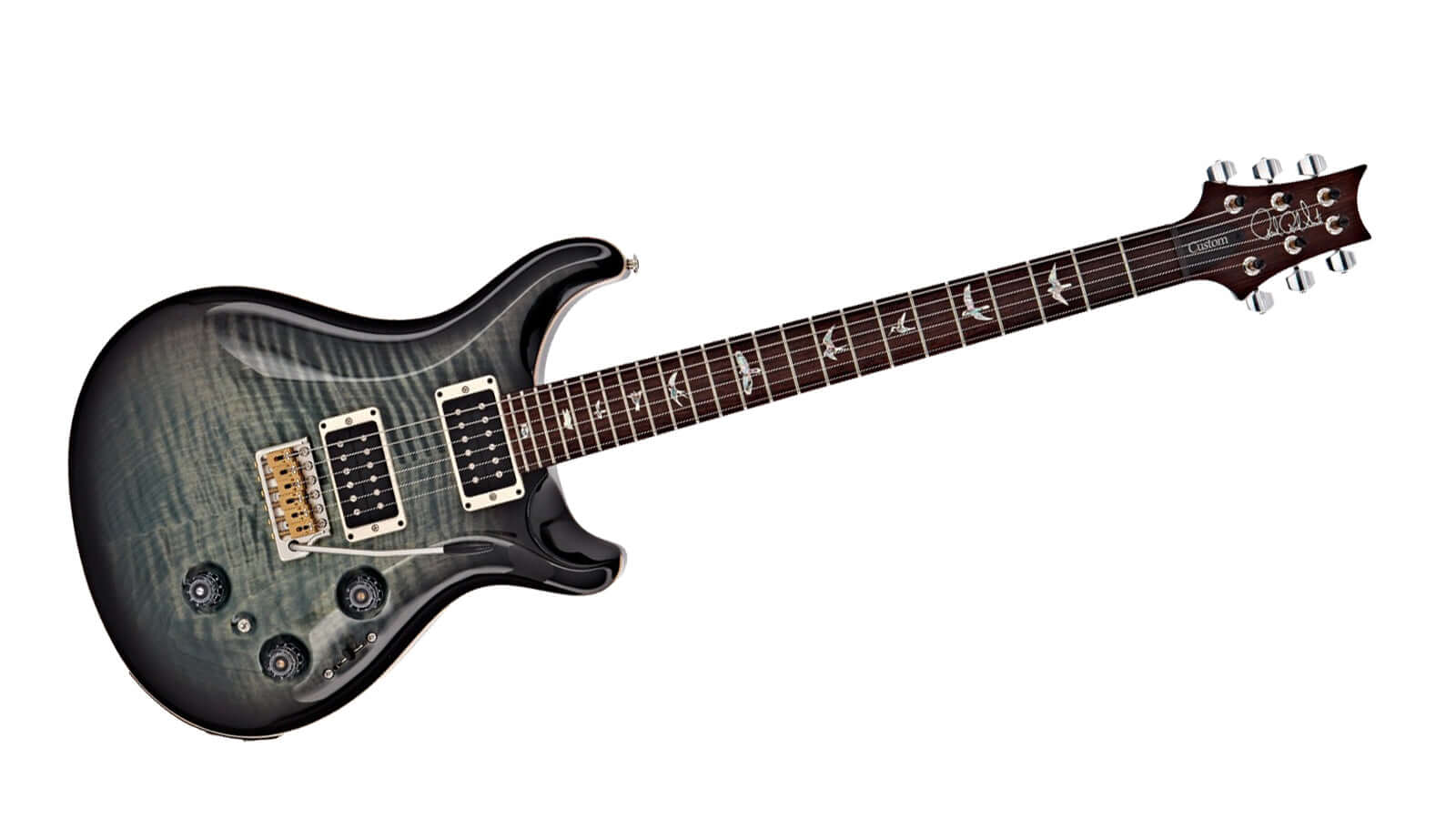Over 80 percent of guitarists say the order and quality of their effects chain shapes their signature sound. Whether you are a beginner building your first pedalboard or a seasoned player searching for richer tones, getting the basics right can make all the difference. This guide breaks down how to build, power, and optimise your effects chain so your music stands out both on stage and in the studio.
Table of Contents
- Understand The Basics Of Guitar Effects Chains
- Choosing The Right Order For Your Pedals
- Managing Power And Signal Integrity
- Using Buffers And True Bypass Wisely
- Blending Analog And Digital Effects
- Minimising Noise And Signal Loss
- Experimenting And Personalising Your Setup
Quick Summary
| Takeaway | Explanation |
|---|---|
| 1. Prioritize pedal order carefully. | Arranging pedals in the optimal sequence maximizes clarity, tone quality, and effect interactions. |
| 2. Use isolated power supplies. | Isolated power supplies minimize noise, maintain signal integrity, and enhance overall performance. |
| 3. Explore buffer and true bypass types. | Buffers help preserve signal strength; true bypass pedals maintain purity but can cause signal loss without balance. |
| 4. Combine analog and digital effects strategically. | Place analog effects early to capture warmth, followed by digital for precision, creating richer sounds. |
| 5. Experiment with unconventional setups. | Swapping pedal positions or mixing effect types can lead to unique sounds, enhancing creative expression. |
1. Understand the Basics of Guitar Effects Chains
Building an effective guitar effects chain is like creating a sonic landscape where each pedal represents a unique brush stroke transforming your guitar’s raw sound. An effects chain is a series of audio effects units strategically connected to modify and enhance your instrument’s tone, allowing musicians unprecedented creative control over their sound.
According to Wikipedia, an effects unit is a device designed to alter the sound of a musical instrument, functioning both during live performances and studio recordings. These units come in various forms, including compact stompboxes and larger rack-mounted systems, each offering distinct sonic possibilities.
The magic of an effects chain lies in its sequential processing. By connecting multiple effects pedals in a specific order, you can create complex, layered sounds that range from subtle tone enrichment to radical sonic transformations. Think of it like a musical signal travelling through different sonic environments, with each pedal adding its unique character and texture.
Key components of an effective effects chain include:
- Gain staging pedals (overdrive, distortion)
- Modulation effects (chorus, phaser, flanger)
- Time based effects (delay, reverb)
- Equalisation and filtering pedals
For guitarists looking to dive deeper into pedalboard organisation, check out our guide on pedalboards and system building. Understanding the fundamental principles of signal flow will help you craft a more intentional and expressive musical voice.
2. Choosing the Right Order for Your Pedals
The sequence of your guitar pedals is not just a random arrangement it is a crucial element in shaping your ultimate sound. Just as a chef carefully layers ingredients to create a perfect dish, guitarists must strategically arrange their effects pedals to achieve sonic harmony.
According to Music Radar, there is a recommended order for placing guitar pedals that helps maintain clarity and maximise each effect’s potential. This methodical approach ensures that your guitar signal is processed in a way that preserves tone quality and prevents unwanted signal degradation.
Recommended Pedal Chain Sequence:
- Tuner pedals (first in chain)
- Dynamic pedals (compressor, volume)
- Gain pedals (overdrive, distortion, fuzz)
- Modulation pedals (chorus, phaser, flanger)
- Time based effects (delay, reverb last)
By following this systematic approach, you protect your signal’s integrity and allow each effect to interact optimally. For guitarists looking to refine their sound further, explore our guide on electric guitar pedal techniques to unlock more advanced sonic possibilities.
Remember that while these guidelines provide an excellent starting point, your unique musical style might call for creative variations. Experiment with different pedal orders to discover the sound that best represents your musical voice.
3. Managing Power and Signal Integrity
The backbone of a pristine guitar sound is not just the effects you choose but how you power and protect your signal chain. Think of your pedalboard as a delicate electronic ecosystem where power management and signal clarity are paramount to preserving your tone’s true character.
According to Guitar Player, proper power management is critical for maintaining optimal performance. Using isolated power supplies can prevent ground loops and significantly reduce unwanted noise that might compromise your sound. This means investing in a quality power distribution system is not a luxury it is a necessity for serious musicians.
Key Power and Signal Management Strategies:
- Use isolated power supplies
- Match voltage requirements for each pedal
- Keep cable lengths as short as possible
- Invest in high quality cables and connectors
- Consider adding buffer pedals to maintain signal strength
From Joyo Audio, strategic cable management and signal preservation are equally important. Using high quality cables and keeping connections minimal will help maintain the integrity of your guitar signal, ensuring that the nuanced tones you craft are delivered precisely and cleanly.
A well powered and carefully constructed signal chain transforms your pedalboard from a collection of effects into a sophisticated musical instrument in its own right. Take time to understand each pedal’s power requirements and invest in quality infrastructure your ears will thank you.
4. Using Buffers and True Bypass Wisely
Your guitar signal is like a delicate whisper that can easily get lost or distorted when travelling through multiple effects pedals. Understanding buffers and true bypass technologies is crucial for maintaining your tone’s clarity and strength across complex signal chains.
A buffer pedal acts like an audio signal guardian. It helps preserve your guitar’s original tone by preventing signal degradation when running through long cable lengths or multiple pedals. Think of it as a signal booster that keeps your sound crisp and defined, preventing the tone from becoming weak or muddy.
Key Considerations for Buffers and True Bypass:
- Place buffer pedals strategically in your signal chain
- Use buffers after long cable runs
- Consider a buffer at the start and end of your pedal chain
- Mix buffered and true bypass pedals thoughtfully
- Listen carefully to your overall tone when configuring
True bypass pedals completely disconnect the effect circuit when not in use, allowing your pure guitar signal to pass through unaltered. However, using too many true bypass pedals can lead to signal loss. This is where buffer pedals become your sonic saviour, maintaining signal strength and preserving your instrument’s natural character.
For guitarists seeking to refine their sound, understanding electric guitar pedal techniques can provide deeper insights into crafting your perfect tone. Experiment with different buffer placements and listen critically to find the sweet spot that makes your sound truly sing.
5. Blending Analog and Digital Effects
The world of guitar effects is a fascinating playground where analog warmth meets digital precision. Blending analog and digital effects is like conducting a sonic orchestra, where each pedal contributes its unique voice to create a rich and complex musical landscape.
According to Music Radar, there is a strategic approach to combining analog and digital effects. The recommended method is to place analog effects like overdrive and distortion earlier in the signal chain, preserving their natural warmth and responsiveness before introducing the crisp precision of digital processing.
Strategic Analog and Digital Blending Techniques:
- Position analog gain pedals early in the chain
- Use digital modulation and time based effects later
- Maintain analog signal integrity
- Experiment with different effect combinations
- Listen critically to your overall tone
Analog effects bring a natural, organic quality to your sound with their rich harmonics and slight imperfections. Digital effects, on the other hand, offer unparalleled precision, complex algorithms, and consistent performance. By carefully layering these technologies, you can create a sound that is both technically sophisticated and emotionally resonant.
For guitarists eager to explore more sonic territories, exploring electric guitar pedal techniques can provide deeper insights into crafting your unique sound. Remember, the art of blending effects is about personal expression finding the perfect balance that speaks your musical language.
6. Minimising Noise and Signal Loss
The quest for a pristine guitar tone is often sabotaged by an unwelcome guest: unwanted noise. Understanding how to minimise signal interference is crucial for maintaining the crystal clear sound that separates professional musicians from amateur performers.
According to Guitar Player, reducing noise is not just about eliminating annoying hum it is about preserving the integrity of your musical expression. Noise reduction involves a strategic approach to cable management, power supply, and pedal configuration.
Key Strategies for Noise Reduction:
- Use high quality, well shielded cables
- Keep cable runs as short as possible
- Implement isolated power supplies
- Place noise gate pedals at the end of your signal chain
- Ensure all connections are clean and corrosion free
From Joyo Audio, proper grounding and shielding are essential for maintaining signal purity. Think of your signal chain as a delicate audio ecosystem where each component can either enhance or disrupt your sonic landscape.
For guitarists looking to refine their sound, exploring electric guitar pedal techniques can provide deeper insights into crafting a noise free signal chain. Remember that silence is not just the absence of sound it is the canvas upon which your musical masterpiece is painted.
7. Experimenting and Personalising Your Setup
Your guitar effects chain is more than just a technical configuration it is an extension of your musical personality. Like a painter selecting unique brushstrokes, musicians can craft signature sounds by fearlessly exploring unconventional pedal arrangements.
According to Music Radar, breaking traditional pedal placement rules can lead to fascinating sonic discoveries. While standard guidelines provide a solid foundation, true musical innovation emerges when you dare to challenge established norms.
Experimental Setup Strategies:
- Document your current signal chain configuration
- Systematically swap pedal positions
- Record and compare tonal differences
- Trust your ears over rigid rules
- Embrace unexpected sound combinations
Unconventional techniques like placing modulation effects before overdrive can yield surprisingly rich textures. Imagine creating sounds that defy traditional expectations transforming your guitar from an instrument into a sound design tool.
For guitarists seeking to refine their approach, professional guitar setup guidance can provide additional insights into personalising your sound. Remember that your unique musical voice emerges not from following rules, but from courageously exploring sonic territories others might overlook.
Below is a comprehensive table summarising the key elements of building and managing an effective guitar effects chain as discussed in the article.
| Component | Description | Key Considerations |
|---|---|---|
| Effects Chain Basics | Effects chains modify and enhance instrument tone using audio effects units. | Includes gain, modulation, time-based, and equalisation effects. |
| Pedal Order | The sequence shapes the ultimate sound. Recommended order: tuner, dynamics, gain, modulation, time effects. | Experimentation is encouraged for personal sound. |
| Power and Signal Integrity | Power management is crucial for optimal performance, using isolated power supplies and quality cables. | Prevents noise and preserves signal clarity. |
| Buffers and True Bypass | Buffers preserve tone by preventing signal loss; true bypass allows pure signals to pass through unaltered. | Balance is needed to prevent unwanted signal loss. |
| Analog and Digital Blending | Combined use of analog and digital effects enriches musical texture. | Position analog pedals early and digital effects later. |
| Noise Reduction | Strategies include high-quality cables, short cable runs, and noise gate pedals. | Ensures clear sound and maintains musical expression integrity. |
| Experimentation | Encourages unconventional pedal arrangements for unique sounds. | Explore different pedal configurations for personalisation. |
Elevate Your Guitar Effects Chain with Expert Gear and Advice
Building the perfect guitar effects chain is a rewarding challenge that demands careful attention to pedal order, power management, and signal clarity. If you have struggled with noise, signal loss, or simply arranging your pedals for maximum tone, you are not alone. Understanding buffers, true bypass, and blending analog with digital effects are crucial steps towards unlocking your unique sound. But knowing what to do is just one part of the journey. Having access to quality pedals, cables, and power supplies makes all the difference.

Discover how MusicStreet.co.uk can support your quest for the ultimate tone. Our premium range of meticulously checked pedals and accessories are designed to enhance every stage of your effects chain. Whether you are seeking isolated power supplies, versatile overdrives, or expert advice on pedalboard setup, our dedicated team and extensive online guides will help you make informed choices. Don’t settle for compromised sound quality when you can achieve clarity and creativity with gear tailored to your needs. Start building your signature sound today by exploring our collection and expert content at MusicStreet.co.uk. For deeper insights, check out our essential tips for using electric guitar pedals or learn about our professional guitar setup services. Take control of your sound now and transform your pedalboard into a refined musical instrument.
Frequently Asked Questions
What is the best order for building a guitar effects chain?
The recommended order for a guitar effects chain starts with tuner pedals, followed by dynamic pedals, gain pedals, modulation pedals, and time-based effects at the end. Arrange your pedals in this sequence to maintain clarity and maximize each effect’s potential.
How can I manage power and signal integrity in my effects chain?
To manage power and signal integrity, use isolated power supplies and keep cable lengths short. Invest in high-quality cables and connectors to reduce noise and ensure your sound remains clear and defined.
What are buffers, and how do they affect my guitar signal?
Buffers help preserve your guitar’s original tone by preventing signal degradation, especially when using long cable runs. Incorporate buffer pedals strategically in your chain to maintain a strong, clean signal throughout your effects.
How do I minimize noise and signal loss in my pedal setup?
Minimize noise and signal loss by using high-quality, well-shielded cables, keeping connections clean, and incorporating isolated power supplies. Consider placing noise gate pedals at the end of your signal chain to control any remaining unwanted noise.
Can I mix analog and digital effects in my effects chain?
Yes, you can blend analog and digital effects by placing analog pedals early in the chain and digital effects later. Experiment with different combinations to find the best balance between warmth and precision in your overall tone.
How can I personalize my guitar effects setup?
To personalize your effects chain, document your current pedal arrangement and systematically experiment by swapping pedal positions. Trust your ears and be open to unconventional placements to discover unique sounds that reflect your musical style.
Recommended
- 7 Essential Tips for Using Electric Guitar Pedals Effectively | MusicStreet
- From Good to Great:Your Sound; 3 Essential Pedals for a Function Band
- The Basics of Pedalboards and How to Build Your Own System - MusicStreet
- Amp Gifts for Guitarists 2024 | MusicStreet
- Sidechaining in Logic Pro 11 - A Practical Guide



Share:
Complete Guide to Dreadnought Guitar Type